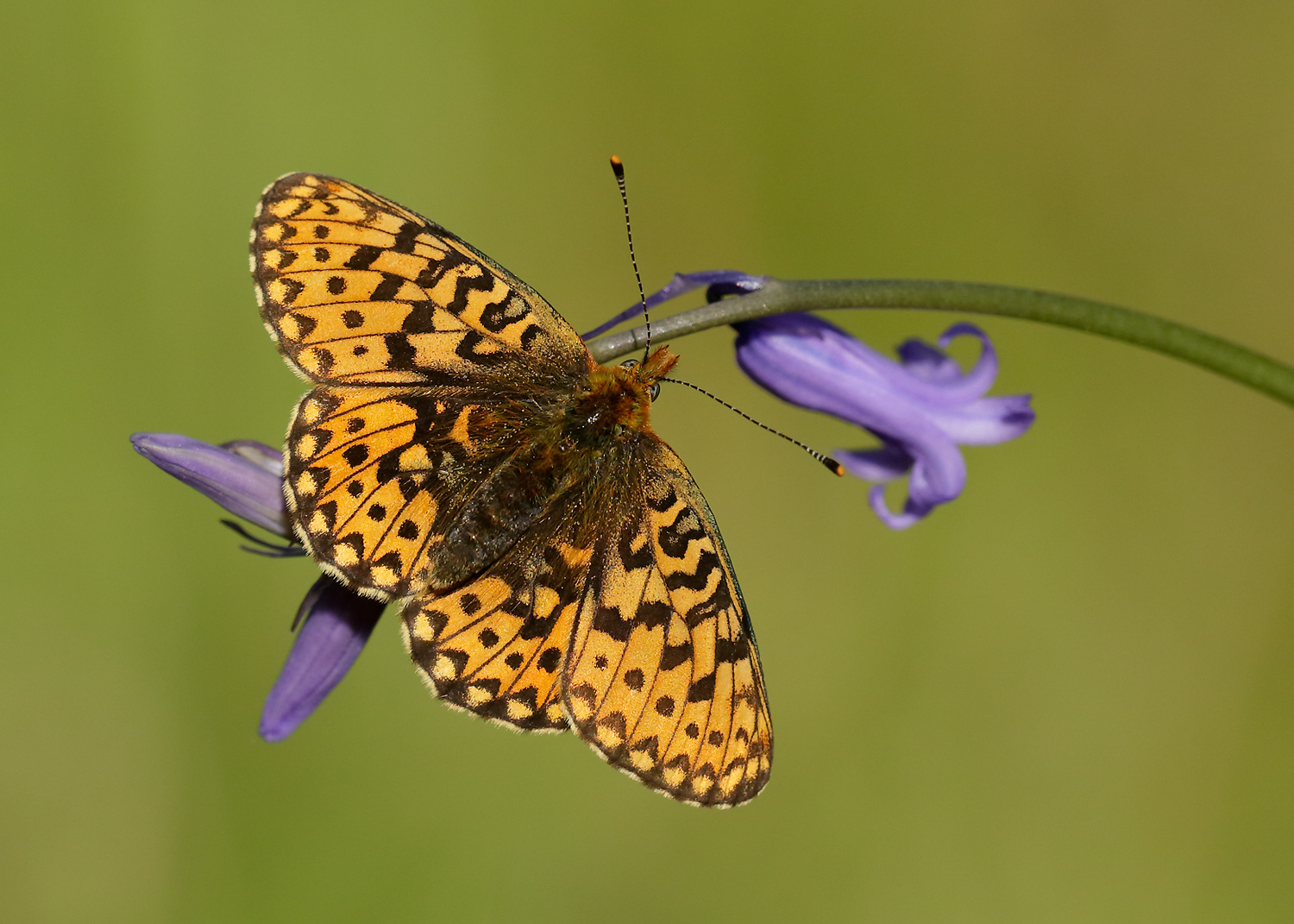The Pearl-bordered Fritillary is one of many species which seriously declined during the second half of the 20th Century.
The ‘Woodman’s Friend’, as it was once affectionately known, was common in the days when many woodlands were actively worked for coppice products and charcoal. The butterfly would follow the woodman, as he moved around creating open areas in which violets, particularly the Common Dog-violet (the caterpillar’s foodplant), would flourish, until the canopy began to close again.
The Pearl-bordered Fritillary is one of the first butterfly species to emerge each year and was also once known as the ‘April Fritillary’, but this was before the Gregorian calendar was adopted (11 day shift), pushing its usual first appearance date back into early May. However, as climate change has encouraged an earlier emergence, it once again lives up to its old name, now appearing from late April onwards. The sight of numerous, male Pearl-bordered Fritillaries swooping low over flower-rich coppice coups, rides and glades is one of the most uplifting spectacles of a British spring. Before the hunt for females begins, they will spend an hour or more taking on fuel, in the form of nectar from carpets of purplish-blue Bugle flowers. Other species, including Dandelion, are also visited, with two or three males sometimes jostling for position on a single flower-head.
The sight of numerous, male Pearl-bordered Fritillaries swooping low over flower-rich coppice coups, rides and glades is one of the most uplifting spectacles of a British spring. Before the hunt for females begins, they will spend an hour or more taking on fuel, in the form of nectar from carpets of purplish-blue Bugle flowers. Other species, including Dandelion, are also visited, with two or three males sometimes jostling for position on a single flower-head.
The males have beautiful, large, blue eyes and hunt down freshly emerged females by sight. They are attracted to any orange-brown objects and on several occasions they have investigated the orange cap of the soft drink bottle I have been carrying.
In the late afternoon and early evening, after a busy day gliding and twisting between the coppice stools, the butterflies will again congregate on trackside patches of Bugle, to replenish their energy reserves. This is the best time for photographers to capture the rare beauty of the Pearl-bordered Fritillary. The pursuit of active butterflies through the coppice coups is discouraged, as you may disturb breeding Nightjars.
Once mated, the female butterfly will hide away for a couple of days while her eggs ripen. She will then slowly flutter over the ground until she finds some suitably fresh violet plants, laying a single egg either on the underside of a leaf, or on vegetation or wood litter close-by. The eggs hatch after about two weeks.
The velvety black, spiny caterpillar moults its skin three times during the summer. Each time it sheds the old skin the caterpillar’s soft body will expand quickly. Soon after the third moult, usually in July, it will enter hibernation, hidden within a curled, dried leaf.

Following a winter of inactivity the caterpillars wake in early March. The air temperature may be low at this time of year, but given a little morning sunshine it is much warmer amongst the leaf and wood litter at ground level.
After the final moult the protective spines of the near full-grown larvae have developed a beautiful yellow colour, tipped with black. Through diligent searching the caterpillars can sometimes be found sunbathing on dried leaves or wood chips, before their body temperature is raised sufficiently for them to become mobile and capable of digesting a meal of violet leaves.
After reaching full size they will then stop feeding and form a superbly camouflaged chrysalis, suspended from low vegetation. Over a period of about three weeks the miracle of metamorphosis takes place inside.
During the later part of that month the ‘April Fritillary’ will emerge and expand its tightly furled wings, before once more starting its fascinating life cycle.
Neil Hulme
Fritillaries For The Future Project Officer


